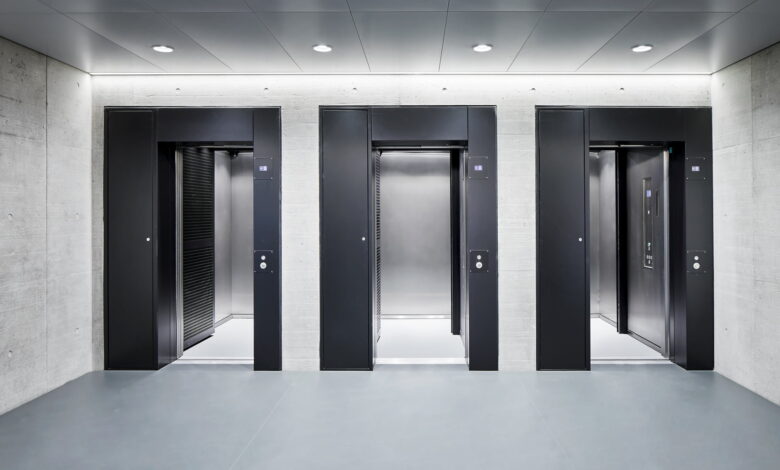Commercial Elevator Dimensions: A Comprehensive Guide

Understanding the dimensions of commercial elevators is crucial for anyone involved in building design and management. When you know the right sizes and specifications, you can avoid problems that could arise during construction and operation. This knowledge not only saves time but also reduces costs.
The Importance of Accurate Measurements in Commercial Building Design
Avoiding Costly Mistakes with Proper Planning
Miscalculating elevator dimensions can lead to expensive errors, like needing to redesign shafts or change entire building layouts. Staying informed about standard dimensions helps prevent these pitfalls.
Setting the Stage for Smooth Installation and Operation
By accurately planning residential elevator dimensions, you set the foundation for a smooth installation process. This planning creates a comfortable and efficient experience for users once the elevator is operational.
Standard Commercial Elevator Dimensions: A General Overview
Common Shaft Sizes and Their Applications
Standard elevator shaft sizes generally range from 5 feet by 7 feet for smaller models to 8 feet by 12 feet for larger ones. These variations depend on the type of elevator and its intended use.
- Passenger Elevators: Often around 6 feet wide and 7 feet deep.
- Freight Elevators: Usually larger, often exceeding 8 feet in width.
Variations Based on Passenger Capacity and Building Type
The size of elevators can also vary based on passenger capacity. Here’s a simplified breakdown:
- Small Commercial Buildings: May use elevators designed for 4-6 passengers.
- Large Office Complexes: Require models capable of accommodating 10-15 passengers.
Factors Influencing Overall Dimensions
Consider these factors when determining elevator size:
- Building height and the number of floors.
- Expected traffic flow, including peak usage hours.
- Type of cargo if freight is involved.
Key Factors Determining Elevator Size
Passenger Capacity: How Many People?
Understanding how many people the elevator needs to accommodate is vital. Larger capacities often require broader and deeper cabins.
Travel Distance: Vertical Reach and Shaft Height
Travel distance affects both safety and efficiency. Taller buildings will need elevators designed for extensive vertical travel, requiring unique structural considerations.
Cab Dimensions and Interior Space
Elevator cab sizes can greatly influence user experience. Here’s what to think about:
- Comfort: Ensure enough room for maneuverability.
- Design: Consider aesthetic choices for interior finishes.
Beyond the Basics: Specialized Elevator Dimensions
Service Elevators and Their Unique Requirements
Service elevators, often used in restaurants or hotels, have different dimensions compared to standard passenger elevators. Typically, they are larger to accommodate items such as food carts and cleaning equipment.
Freight Elevators: Size Considerations for Cargo Handling
Freight elevators must be spacious since they handle heavy loads. Dimensions often exceed 8 feet in width and 10 feet in depth to safely transport goods.
Hydraulic vs. Traction Elevators: Dimension Differences
Hydraulic elevators generally require a larger pit for their machinery, while traction elevators can be more compact, making them useful in tight spaces.
Codes, Regulations, and Compliance
ADA Compliance and Accessibility Standards
Elevators must meet the Americans with Disabilities Act (ADA) standards, which set specific requirements for size and accessibility features. Always check these guidelines to ensure compliance.
Building Codes and Local Ordinances
Local building codes can dictate specific dimensions and safety features. Familiarizing yourself with these regulations can avoid legal issues later.
Ensuring Safety and Meeting Regulatory Requirements
Safety features, such as emergency exits and intercoms, also influence elevator dimensions. Prioritize these aspects during the design phase.
Planning and Design Considerations for Efficient Space Utilization
Optimizing Shaft Placement for Minimal Space Loss
An optimal elevator shaft design minimizes wasted space. Look for areas where the elevator can fit without disrupting the overall layout.
Integrating Elevators with Building Aesthetics and Functionality
Ensure your elevator design complements the rest of the building’s style. Careful design choices can enhance both functionality and visual appeal.
Working with Architects and Elevator Manufacturers
Collaborate closely with architects and elevator manufacturers. Their expertise will help tailor dimensions to specific needs while adhering to safety standards.
Conclusion: Maximizing Efficiency and Functionality Through Informed Planning
In summary, understanding commercial elevator dimensions is key for effective building design.
- Recap of Key Dimensional Factors: Always consider passenger capacity, travel distance, and cab space.
- Importance of Professional Consultation: Seek expert guidance to ensure compliance and efficiency.
- Long-Term Benefits of Accurate Sizing and Planning: Investing time upfront leads to a smoother construction process and a better user experience.
Maximizing space, complying with codes, and enhancing user experience through informed planning will set your project up for success.




